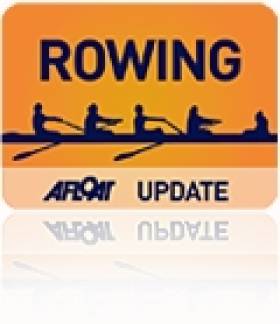Displaying items by tag: Old Collegians
Rowers From Commercial and Old Collegians Shine at Neptune
#ROWING: A Commercial/Old Collegians composite eight beat Trinity to win the men’s senior eights title at the Neptune Regatta at Islandbridge today. The winners had just half a length to spare at the end of a good race.
Michael Maher, the number two man in the winning boat, had earlier won the senior single sculls, while Holly Nixon beat Eimear Lambe in the women’s club one single sculls.
The event was held in excellent, sunny, conditions.
Neptune Regatta, Islandbridge
Men
Eight – Senior: Commercial/Old Collegians (N Gahan, M Maher, R Peguet, S Jacob, D Neale, A Maher, F Groome, J Graham; cox G Connolly) bt Trinity, ½l. Novice: UCD B bt Trinity B, 3l. Masters: Belfast RC bt Carlow 1½ l. Junior 16: Portora bt Bann 4l.
Four – Club One, coxed: UCD bt Blackrock, ¾l. Intermediate, coxed: Trinity bt Neptune, easily. Junior, coxed: Portora bt Bann 6l. Masters, coxed: Carlow (D) bt Commercial (C) easily
Sculling, Quadruple – Club Two, coxed: Commercial bt Athlone 2½ l. Junior 18: Athlone bt Commercial 1½ l.
Junior 16, coxed: Commercial bt Bann, 4l. Junior 15, coxed: St Michael’s bt Methodist Col, 1½ l. Junior 14, coxed: New Ross bt St Michael’s ½ l.
Double – Junior 16: St Michael’s bt Graiguenamanagh, easily
Single – Senior: Commercial (M Maher) bt Trinity (G Como) easily. Club One: Garda (D Kelly) bt UCD (Toland) canvas. Club Two: Trinity (Addison) bt Trinity (Slevin). Intermediate One: Trinity (Rooney) bt Sligo 2l. Junior 18: Clonmel (Shannon) bt Clonmel (Lonergan). Junior 16: Graiguenamanagh (Lennon) bt Graiguenamanagh (Scully) 3l.
Women
Eight – Club One: Portora bt UCD, 3½ l. Junior 18: Portora bt Bann. Junior 16: Portora bt Galway, 2l. Junior 15: Portora A bt Portora B 2l.
Four – Club One, coxed: Commercial A bt Commercial B, easily.
Sculling, Quadruple – Club Two: Galway bt Neptune, 2½ l. Junior 18: Neptune bt Methodist Col, 4l. Junior 16, coxed: Bann bt St Michael’s 4l. Junior 15, coxed: Commercial bt Methodist Col 4l. Junior 14, coxed: New Ross bt St Michael’s.
Double – Junior 16: Clonmel bt Methodist Col Did Not Finish. Junior 15: Col Chiarain bt Clonmel 4l.
Single – Club One: Portora (H Nixon) bt Commercial (E Lambe) 1l. Club Two: Carlow (H O’Toole) bt Athy 2l. Jun 18: Commercial (A Rodger) bt Methodist Col. Junior 16: Clonmel bt Sligo (Did Not Finish).





























































